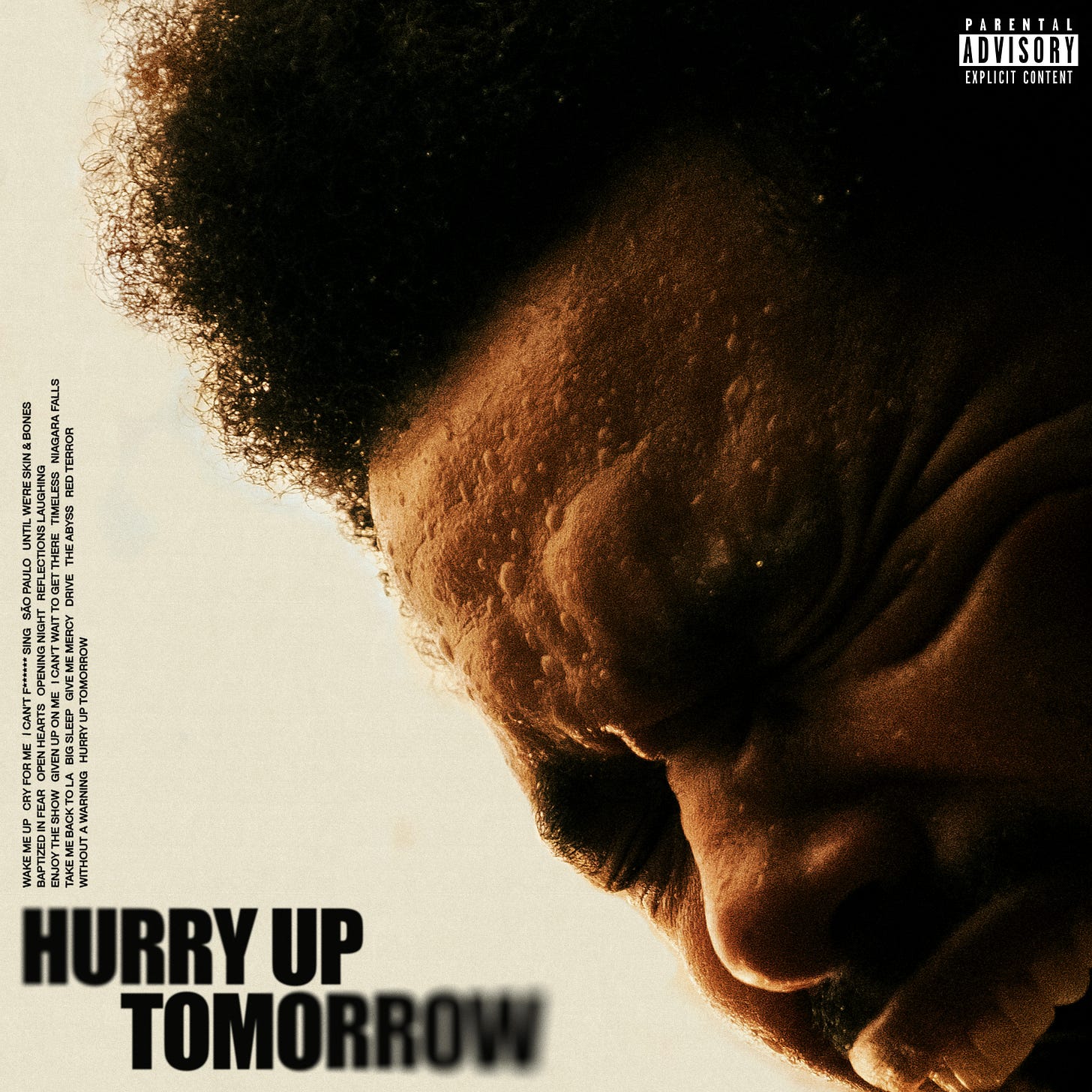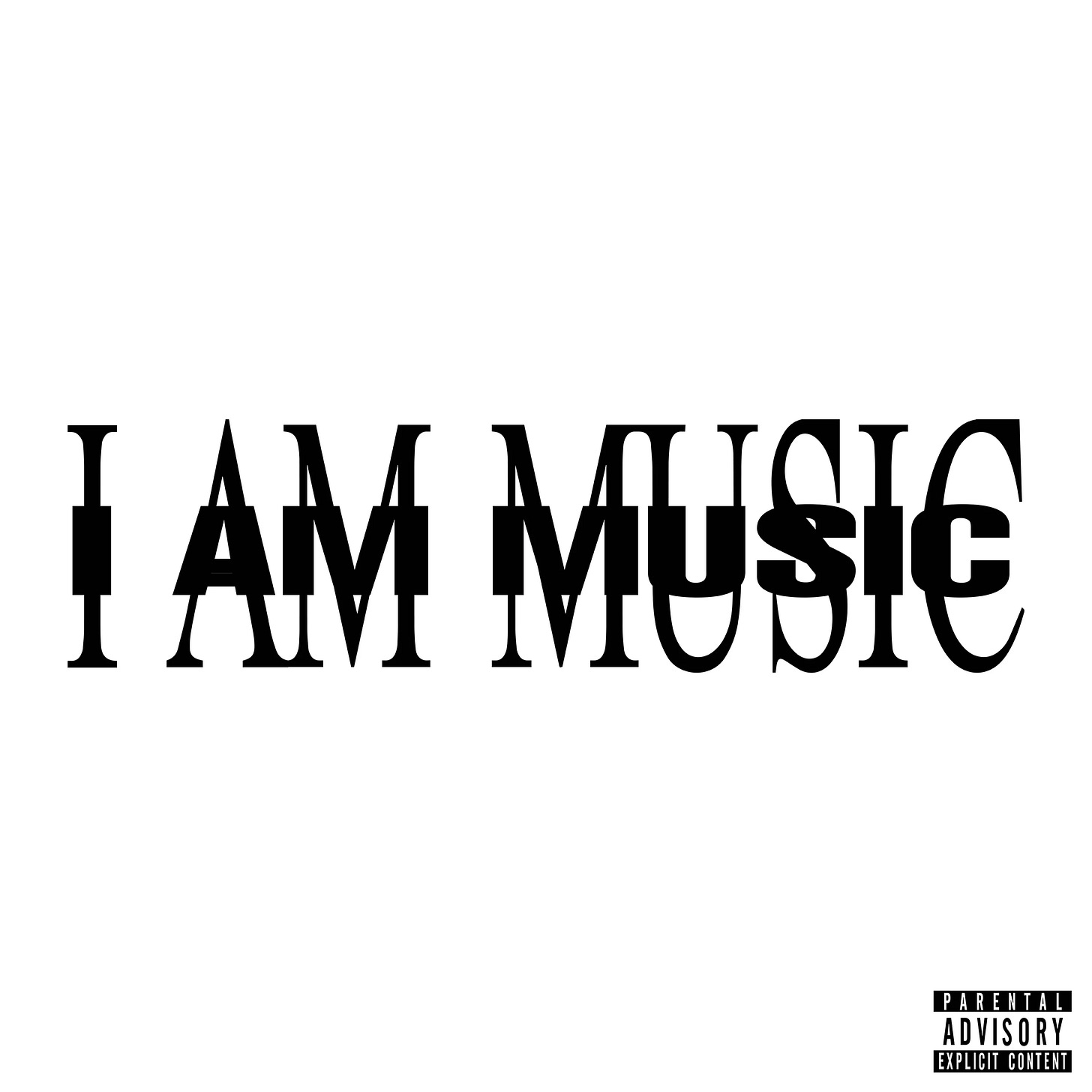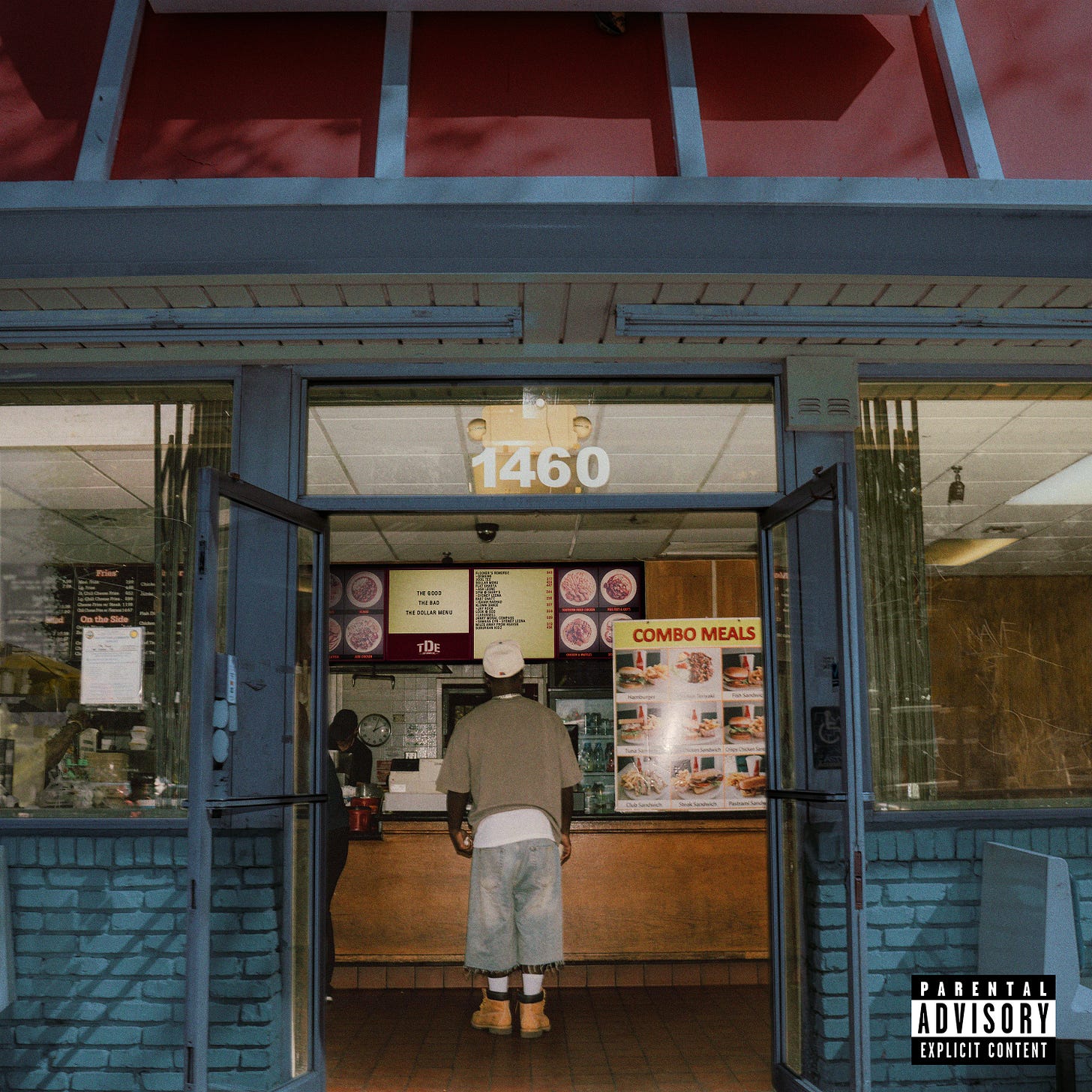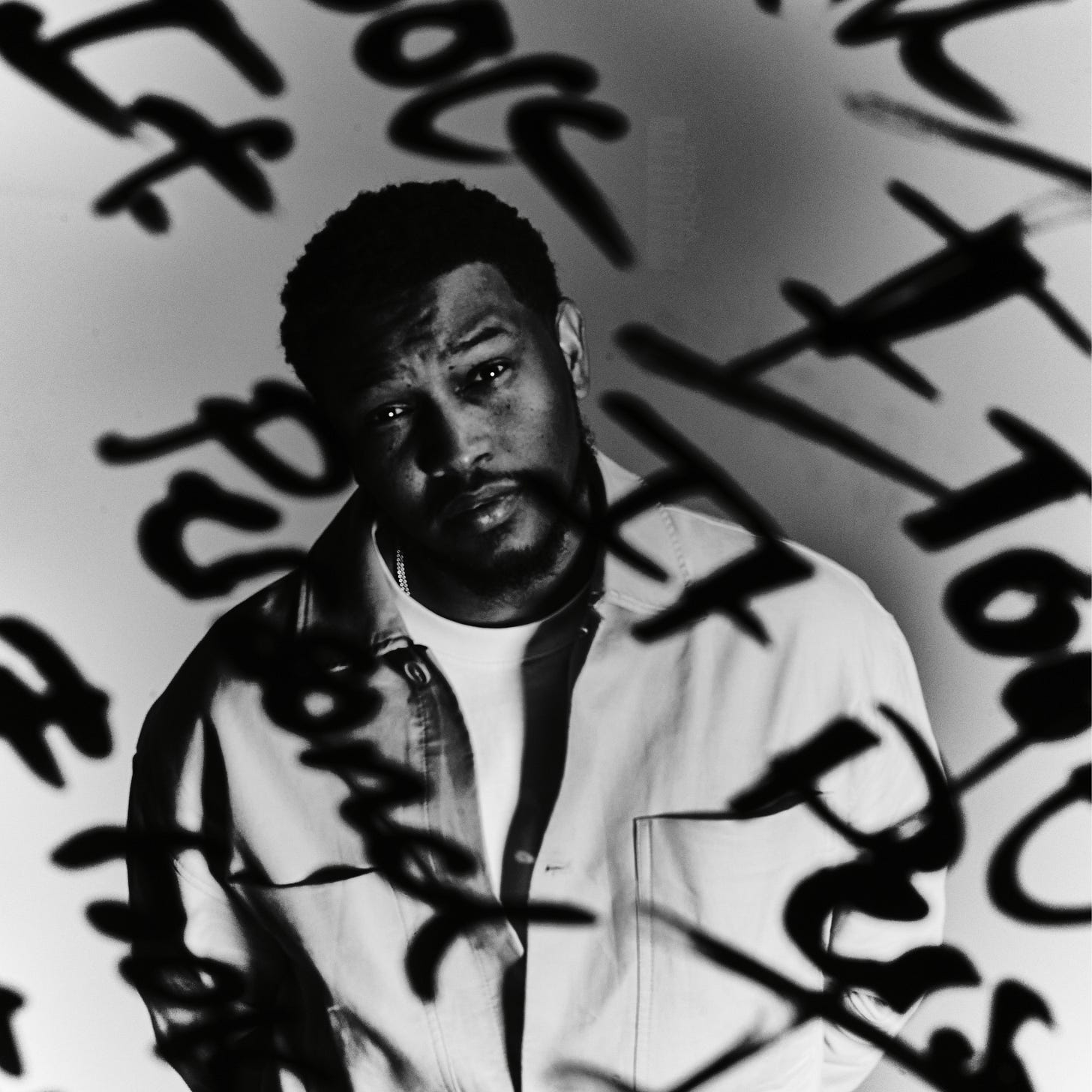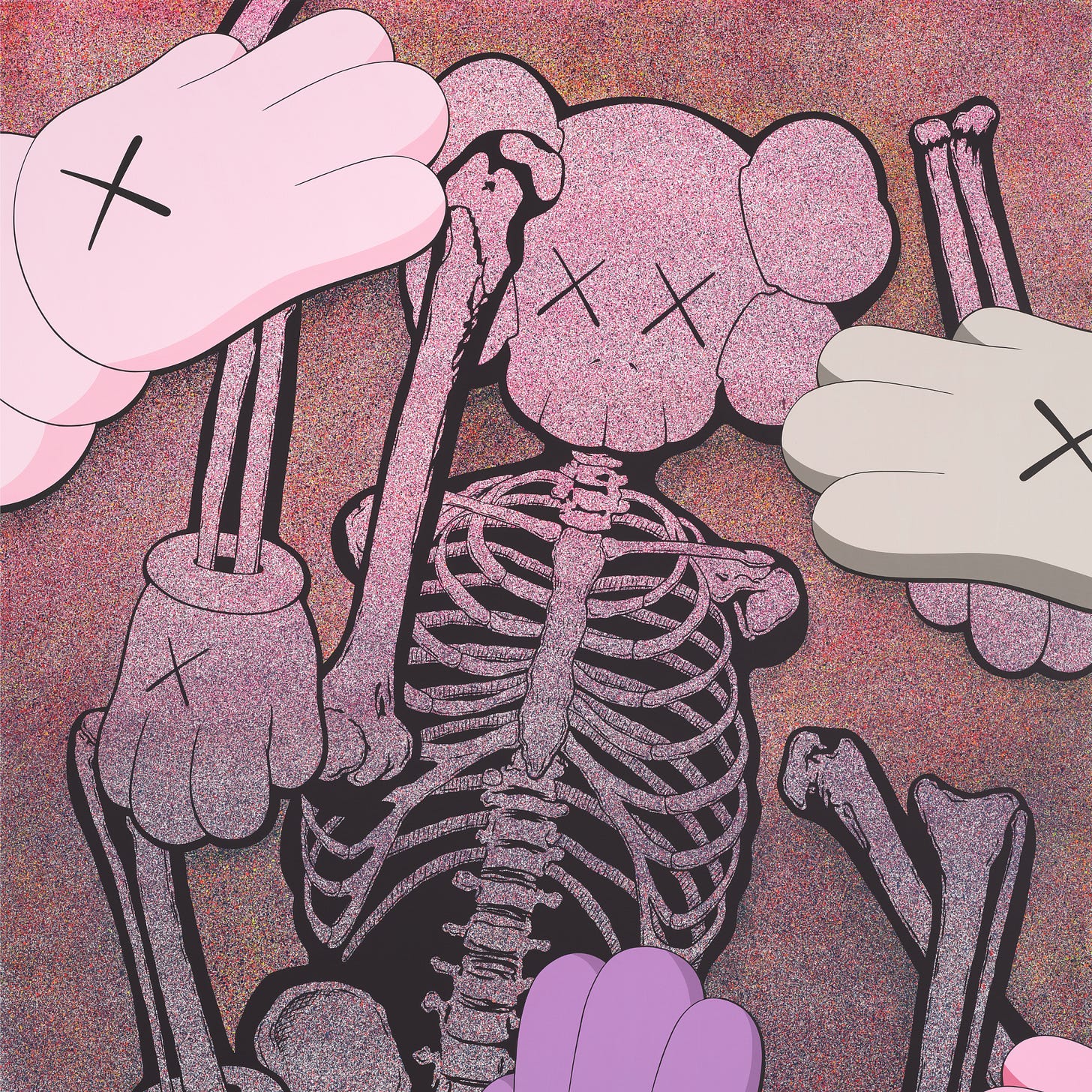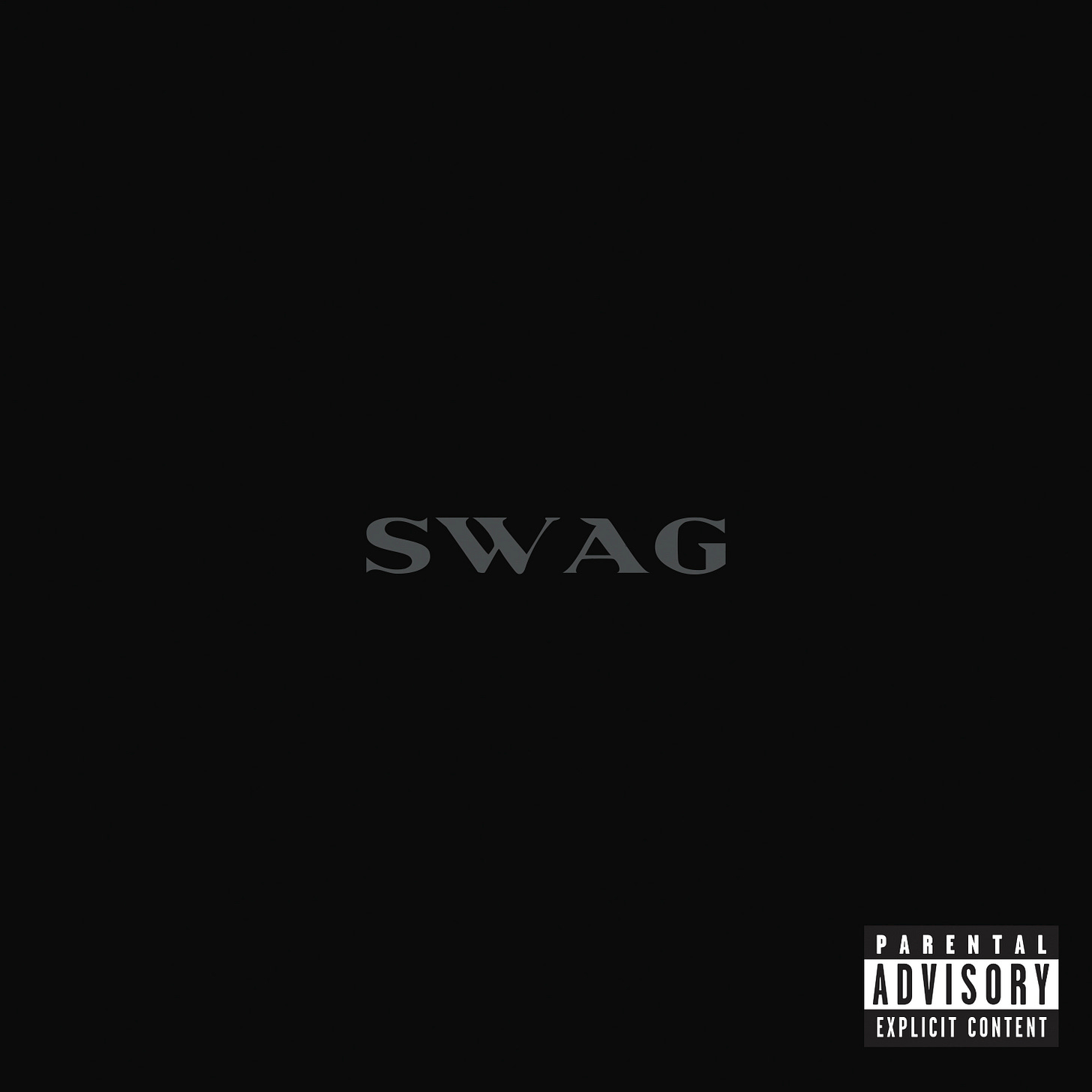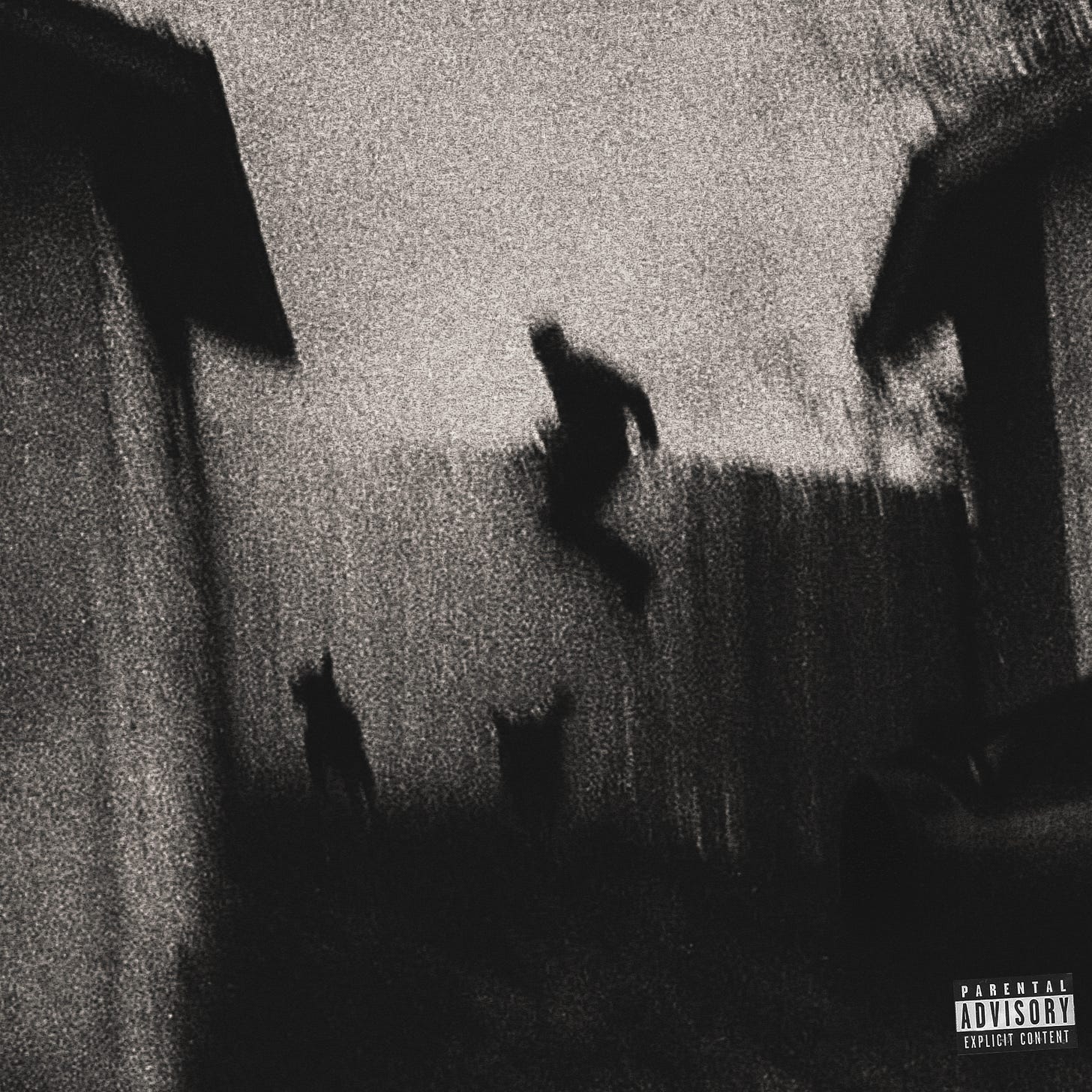Decoding 2025 Rap and R&B Album Rollouts
We analyzed the rollout strategies of some 2025 rap and R&B albums, grading each on creativity, pre-album singles, music videos, fan reception, and overall effectiveness.
Rollout, at its best, is narrative architecture. What does that mean? A long‑view plan that releases music like chapters in a serial, each single or snippet deepening the story while sharpening the appetite for the whole arc. Teasers, visual motifs, and live touchpoints don’t just advertise; they position the record in listeners’ lives weeks before the first play. That runway can shape how songs metabolize in culture, giving choruses room to linger and themes time to germinate.
In recent years, that craft has thinned. Labels chase shock value, firing albums into feeds with twenty‑four hours’ notice, assuming “surprise” equals momentum. The result is often a sugar rush: an overnight streaming spike, followed by silence once listeners realize they missed the breadcrumbs that turn tracks into chapters. Without that measured build‑up—cover reveals, strategic interviews, smartly spaced singles—albums flatten into one‑week events instead of seasons.
Adding to the blur is a chorus of self‑appointed A&Rs on social media, clocking first‑week numbers and mock‑executive jargon while ignoring the music’s internal logic. Their thread‑length hot takes mistake boardroom optics for art direction, chasing the dopamine of industry gossip. The remedy is simple: step back from imaginary conference tables, re‑enter the listener’s seat, and let artists steward their own slow burn. The music—and the conversation around it—gets richer when the rollout is allowed to breathe. In this column, we’ll be grading these hand-picked albums for their rollout presentation.
What does the grading criteria mean?
The creativity of the rollout assesses how imaginative and distinctive the promotional plan was. Did the artist create a world around the record, complete with cryptic clues, immersive experiences, surprise campaigns, or post-release dates?
Pre‑album singles examine the strength and sequencing of the songs leading up to the release. Memorable singles set the tone, introduce new sounds, and sustain attention. A steady drip of songs that showcase an album’s variety feels thoughtful; a barrage of incongruent drops can feel scattershot.
Music videos look at how video content extended the rollout. Compelling visuals can deepen a song’s narrative, reveal an album’s aesthetic, or become cultural moments in their own right. Frequent, well‑produced videos build momentum, while perfunctory or absent visuals squander an opportunity to engage.
Fan reception/buzz gauges how the campaign resonated with listeners, including online chatter, chart performance, and critical reception. Did the rollout foster anticipation and conversation, or did it leave fans confused or underwhelmed?
Overall effectiveness considers how well all elements fit together and whether the campaign achieved its goals. It balances ambition against execution: a wildly creative plan that fails to generate interest may rate lower than a straightforward but finely tuned strategy.
These criteria are interdependent: creative marketing influences buzz, and the quality of singles or videos can carry or sink the entire rollout. The analysis below applies these filters to 12 rap and R&B projects released in 2025.
The Weeknd, Hurry Up Tomorrow
Abel Tesfaye’s final release under his Weeknd moniker marked the culmination of his pop‑spectacle era, closing the curtain on six years of maximal showmanship. Promotion started months in advance: a haunted‑house experience at Universal Studios and a cryptic, password‑protected website teased the record’s dystopian narrative. A pop‑up show in São Paulo revealed the album title and opened pre‑orders. The rollout combined old-school TV appearances with futuristic digital puzzles; a 48-hour countdown and a partnership with Apple Music generated Star Wars-level hype. Pre-release singles were strategically spaced: “Timeless” (Sept 2024), “São Paulo” (Oct 2024), and the ballad “Cry for Me” (Feb 2025) showcased different aspects of the record and kept his name in headlines. Each song arrived with cinematic videos that expanded the album’s story. The efforts paid off: the record opened with 490,500 equivalent units and debuted at No. 1 on the Billboard 200. The combination of immersive marketing and strong singles turned this into the year’s benchmark rollout.
Scores: Creativity: 9, Singles: 9, Videos: 9, Reception: 10, Overall: 9.4
Playboi Carti, I AM MUSIC
Carti’s rollout blurred logistics and theater, letting each leak double as a live provocation. The campaign began in late 2023 with cryptic social‑media posts (“I am music”) and studio hints. Instead of streaming‑platform singles, he leaked songs exclusively through Instagram or YouTube—“Different Day,” “2024,” “H00d By Air,” “Backr00ms” (with Travis Scott), “Evil J0rdan” and “Ketamine”—often accompanied by grainy, chaotic videos. After months of rumours and festival previews, he launched a late‑winter billboard campaign with messages like “MUSIC IS COMING” and “I AM MUSIC MF” across major cities and finally announced a March 14 release date. A short delay followed due to sample clearance. Once the record arrived, it debuted at No. 1 on the Billboard 200 with roughly 298k equivalent units. The slow drip of leaks generated cult excitement, but the lack of official singles and polished videos made the rollout feel messy rather than methodical.
Scores: Creativity: 8, Singles: 6, Videos: 5, Reception: 8, Overall: 6.8
Alex Isley, When (EP)
Isley’s first major‑label project relied on restrained, classy promotion. She announced her signing to Free Lunch/Warner Records with the smoky single “Hands,” produced by Camper and paired with a club‑set video. A follow‑up single, “Ms. Goody Two Shoes,” dropped in early April and previewed the EP’s elegant soul palette. On release day (April 18), she established When as an exploration of love, identity, and emotional growth. Without big‑budget visuals or gimmicks, she leaned on consistent messaging and her pristine vocals. Die-hards or enthusiasts within R&B circles praised the music, though the quieter rollout limited its mainstream reach (not us, though).
Scores: Creativity: 6, Singles: 7, Videos: 5, Reception: 6, Overall: 6.0
SAULT, 10
The enigmatic collective continued their tradition of surprise drops. On April 14, they posted four song snippets on social media; within days, the full album 10 arrived on Easter weekend. There were no lead singles, press campaigns, or interviews. The record briefly disappeared and reappeared with altered track titles, adding to the mystique. Despite minimal promotion, the album reached No. 24 on the UK Album Downloads Chart and drew praise from core fans. The secrecy matched the collective’s ethos but limited mainstream buzz.
Scores: Creativity: 7 (surprise tactic), Singles: 2, Videos: 1, Reception: 6, Overall: 4.0
Coco Jones, Why Not More?
Jones navigated her transition from breakout EP to full‑length debut with a calculated blend of radio‑friendly singles and heartfelt messaging. She previewed the album with the singles “Here We Go (Uh Oh)” and the Future‑assisted “Most Beautiful Design.” In March 2025, she announced the album’s April 25 release and dropped “Taste,” produced by Stargate and Jasper Harris, and sampling Britney Spears’ “Toxic.” The track’s video, directed by Ava Rikki, signaled a confident, sensual direction. A week later, she teased another single, “You,” which arrived March 28 as an additional preview. When the record was released, it included those songs, plus new tracks, and Jones emphasized themes of authenticity and self-discovery. The campaign relied on digital rollouts and talk‑show performances rather than large‑scale stunts. Within R&B circles, the album found an appreciative audience; chart impact was respectable rather than spectacular.
Scores: Creativity: 7, Singles: 8, Videos: 7, Reception: 7, Overall: 7.3
Ray Vaughn, The Good, The Bad & The Dollar Menu
Top Dawg Entertainment’s newest voice spent more than a year seeding singles. Early songs such as “East Chatt” (with Isaiah Rashad), “Black Jesus,” and “Supposed to Die” highlighted his storytelling. In March 2025, he released the reflective “Cemetery Lanterns,” followed by the brash “Flat Shasta” with Ash Leone, and days before the project, the semi‑title track “Dollar Menu.” The project’s release date shifted from April 18 to April 25. Each single arrived with gritty visuals that reinforced his blue‑collar narrative. Because the promotion largely stayed within hip-hop media and lacked a broader appeal, the mixtape’s impact was modest outside the TDE fan base, unless you were in the know beyond the Joey Bada$$ “beef.”
Scores: Creativity: 5, Singles: 7, Videos: 6, Reception: 5, Overall 5.8
Rome Streetz & Conductor Williams, Trainspotting
The duo opted for a focused, old‑school rollout reminiscent of ’90s indie rap. Their campaign began mid‑May with the single “Rule 4080,” accompanied by a video and trailer that critiqued exploitative industry practices. In interviews, they constructed the song as a cautionary tale about corporate greed. The track’s stark, sample‑heavy production and street‑wise visuals catered to their core audience. The album was released on May 30 via Mass Appeal, with minimal additional promotion. Fans who were already attuned to their work praised the chemistry and cohesiveness, while the minimal rollout kept the record on the underground radar. It’s still one of our best releases this year.
Scores: Creativity: 6, Singles: 6, Videos: 5, Reception: 6, Overall: 5.8
Little Simz, Lotus
Little Simz paired an ambitious artistic vision with professional promotion. On Feb 26, she announced the album and released “Flood” with a stark black‑and‑white video. She followed with the lush, introspective “Free” on March 27 and the punk‑spirited “Young” on May 14; each single came with its own visual style. Initially slated for May 9, the album was delayed to June 6 due to scheduling conflicts with the film shoot. The singles—conceptually varied yet thematically linked—displayed her range and built anticipation without overwhelming listeners. Upon release, the record debuted at No. 3 on the UK Albums Chart and No. 2 on the Official Chart Update, her highest charting to date. The rollout struck a balance between artistry and effective marketing.
Scores: Creativity: 8, Singles: 9, Videos: 8, Reception: 8, Overall: 8.3
Nick Grant, I Took It Personal
After years of sporadic singles, Nick Grant returned with a boombap‑soul hybrid. He released the single “Nothing’s Free” in March 2025, followed by “Pass It Out” in mid‑May. The project’s release arrived a week later than initially scheduled. If you’ve been subscribed to us, then we praised this record for its autobiographical storytelling (with immaculate wordplay and entendres) and the fusion of boom‑bap, soul, and trap influences. Without label backing or high‑budget promotion, the rollout leaned on social media snippets, word of mouth, and the quality of the music itself. Fans attuned to lyric‑driven hip‑hop responded well; the broader market barely noticed.
Scores: Creativity: 5, Singles: 6, Videos: 4, Reception: 7 (critical acclaim but limited reach), Overall: 5.5
Clipse, Let God Sort Em Out
Pusha T and Malice’s return was cast as hip‑hop’s headline renaissance, not a routine comeback. In late May, it was revealed that they would release their first album since 2009 on July 11, and they shared the Pharrell-produced lead single, “Ace Trumpets.” On June 17, they released the promotional track “So Be It,” accompanied by a video on Instagram and YouTube, which included a pointed diss aimed at Travis Scott. They built anticipation through billboard teasers, podcast appearances, and performance platforms. The first single’s COLORS performance and a plethora of interviews kept the conversation lively, and they also did their Tiny Desk and released the incredible “Chains & Whips” music video, directed by Gabriel Moses. A week before release, reminders and speculation circulated; the album debuted near the top of the charts (and was #1 on Apple Music’s hip-hop/rap chart). The rollout’s blend of traditional media (trust, they were everywhere, especially performing at the ESPYs last week), high-quality singles, and strategic controversy struck a balance between nostalgia and savvy.
Scores: Creativity: 8, Singles: 9, Videos: 10, Reception: 9, Overall: 9.0
Justin Bieber, Swag
I know what you’re thinking: “Swag is not an R&B album,” but the musicality of it says otherwise. Don’t be fooled by the ‘Pop’ label. Bieber’s seventh studio album marked his return after a four‑year hiatus. He and his label orchestrated an elaborate teaser campaign: global billboards featuring only the word “SWAG” appeared in cities like Los Angeles, New York, and Reykjavík; over several days, they revealed the complete 20‑song track list (turned out to be 21, no savage). Promotional imagery shot in black and white showed Bieber holding his son and wife, reinforcing themes of fatherhood and maturity. The tracklist reveal hinted at a July 11 release and included songs exploring mental health, fatherhood, and his relationship with Hailey. When the album arrived, it featured producers from Carter Lang and Dijon, as well as collaborations with artists like Gunna, Sexyy Red, and Cash Cobain. Early streaming figures suggested a strong commercial showing (by debuting at #2); the marketing leveraged both nostalgia and a new chapter in his life. By pairing a straightforward personal narrative with a global billboard blitz, the rollout felt substantial without oversaturating fans.
Scores: Creativity: 8, Singles: 7 (no major singles prior to release), Videos: 6, Reception: 9, Overall: 7.5
JACKBOYS & Travis Scott, JACKBOYS 2
From cryptic building projections to Lamborghini photo‑ops, Scott pushed the project with full studio‑film bravado. On March 19, a message reading “What the f*** is we doing? JACKBOYS 2 on the way” was projected on a Hong Kong building; days later, he confirmed the project at a Miami club. The lead single, “ILMB,” featuring Sheck Wes, was released on April 9, and at Coachella, he performed unreleased tracks, including “Kick Out” and “Dumbo.” On April 30, he teased “Kick Out” and released an official trailer directed by Harmony Korine; physical pre‑orders launched the next day. Artists teased their involvement by posing with a custom Lamborghini bearing the album logo. The second single, “2000 Excursion,” dropped July 8; two days later, he announced the 17‑track album’s release date. The record arrived on July 13, featuring guest appearances from Don Toliver, Sheck Wes, SoFaygo, Playboi Carti, Future, and more. A deluxe edition followed on July 15. The mix of art-film trailers, luxury imagery, and large-scale performances cultivated a blockbuster aura, though some listeners critiqued the album for prioritizing vibe over cohesion.
Scores: Creativity: 8, Singles: 8, Videos: 9, Reception: 7, Overall: 8.0
The case studies suggest several crucial elements for future rollouts:
Narrative coherence matters. The Weeknd’s dystopian concept, Little Simz’s personal rebirth, and Justin Bieber’s fatherhood theme anchored their campaigns. Even a surprise drop like SAULT’s works best when tied to a tradition or story.
Strategic pacing of singles keeps attention without diluting impact. A steady cadence—three singles across three months for The Weeknd and Simz—builds anticipation. In contrast, Carti’s flood of leaks and SAULT’s lack of singles created either confusion or reliance on existing fans.
Visual language amplifies music. High‑quality videos and trailers (Harmony Korine for JACKBOYS 2, black‑and‑white imagery for Swag) extend the album’s world and provide shareable content. Low‑effort visuals or none at all leave potential engagement on the table.
Fan engagement beyond standard marketing—interactive websites, pop‑up events, immersive experiences—turns an album into a cultural moment. The Weeknd’s haunted house and Clipse’s media appearances created personal connections. Even underground acts can experiment with limited‑edition merchandise or listening sessions to deepen investment.
Authenticity remains paramount. Audiences responded to Coco Jones’s introspective messaging and Nick Grant’s autobiographical storytelling. Over‑engineered hype without substance can backfire; fans will tune out if the music doesn’t match the marketing.
Successful future rollouts will likely blend these strategies: harnessing multimedia storytelling while respecting fans’ desire for authenticity and meaningful pacing. As streaming and social media continue to shorten attention spans, artists must craft rollouts that feel both urgent and carefully considered—a delicate balance between art and science.


